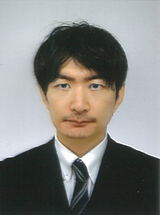
Ikabata, Yasuhiro
| Affiliation | Information and Media Center |
|---|---|
| Concurrent post | Department of Computer Science and Engineering |
| Title | Associate Professor |
| Fields of Research | Computational Chemistry, Chemoinformatics, Computational Science, High-Performance Computing |
| Degree | Doctor of Science (Waseda University) |
| Academic Societies | American Chemical Society, The Chemical Society of Japan, Society of Computer Chemistry, Japan, Japan Society of Theoretical Chemistry, Japan Society for Molecular Science |
| Researcher information URL(researchmap) | Researcher information |
Research
Development of electronic structure theory, algorithms and programs are important to further promote research and development using computational chemistry. I have worked on theories and applications of quantum chemical calculations for solving the Schrödinger equation of molecular systems. My recent research interests include the theory of electronic excited states and its applications, structure prediction and property elucidation of molecular crystals, structure and stability prediction of protein-ligand complexes, and prediction of molecular energies and properties using machine learning.
Theme1:Development of computational chemistry methods
Selected publications and works
“Picture-change correction in relativistic density functional theory”, Y. Ikabata, H. Nakai, Phys. Chem. Chem. Phys. 23, 15458 (2021).
“Machine-learned electron correlation model based on frozen core approximation”, Y. Ikabata, R. Fujisawa, J. Seino, T. Yoshikawa, H. Nakai, J. Chem. Phys. 153, 184108 (2020).
“Machine-learned electron correlation model based on correlation energy density at complete basis set limit”, T. Nudejima, Y. Ikabata, J. Seino, T. Yoshikawa, H. Nakai, J. Chem. Phys. 151, 024104 (2019).
“Extension and acceleration of relativistic density functional theory based on transformed density operator”, Y. Ikabata, T. Oyama, M. Hayami, J. Seino, H. Nakai, J. Chem. Phys. 150, 164104 (2019).
Theme2:Elucidation of structures, properties, and reactivities using computational chemistry techniques
Selected publications and works
“Direct NIR-Light-Activatable Phthalocyanine Catalysts”, Y. Katsurayama*, Y. Ikabata*, H. Maeda, M. Segi, H. Nakai, T. Furuyama, Chem. Eur. J. 28, e202103223 (2022). (*Equal contributions)
“An Element-Substituted Cyclobutadiene Exhibiting High-Energy Blue Phosphorescence”, Y. Shoji*, Y. Ikabata*, I. Rhyzhii, R. Ayub, O. El Bakouri, T. Sato, Q. Wang, T. Miura, B. S. B. Karunathilaka, Y. Tsuchiya, C. Adachi, H. Ottosson, H. Nakai, T. Ikoma, T. Fukushima, Angew. Chem. Int. Ed. 60, 21817−21823 (2021). (Very Important Paper, *Equal contributions)
“Near-Infrared Absorption of π-Stacking Columns Composed of Trioxotriangulene Neutral Radicals”, Y. Ikabata, Q. Wang, T. Yoshikawa, A. Ueda, T. Murata, K. Kariyazono, M. Moriguchi, H. Okamoto, Y. Morita, H. Nakai, npj Quantum Materials 2, 27 (2017).
“Unveiling a New Aspect of Simple Arylboronic Esters: Long-Lived Room-Temperature Phosphorescence from Heavy-Atom-Free Molecules”, Y. Shoji*, Y. Ikabata*, Q. Wang, D. Nemoto, A. Sakamoto, N. Tanaka, J. Seino, H. Nakai, T. Fukushima, J. Am. Chem. Soc. 139, 2728-2733 (2017). (*Equal contributions)
Title of class
Advances in Computational Simulations, HPC Programming 1, HPC Programming 2, Advanced Data Science Exercise

